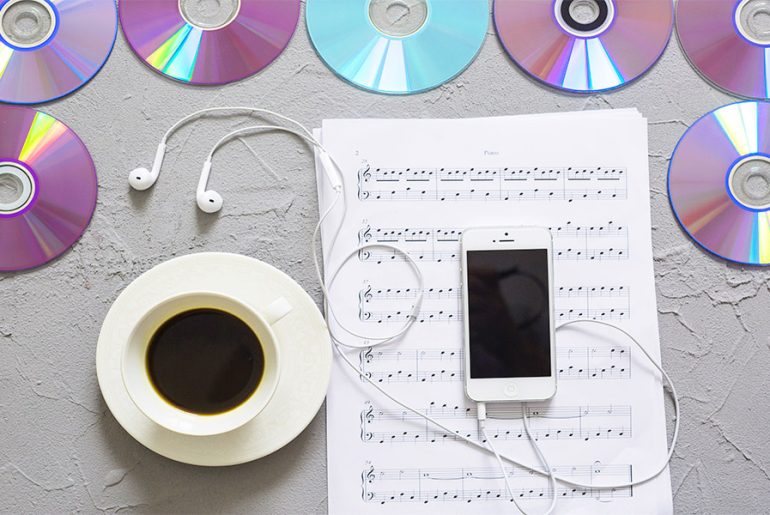The digital music landscape has transformed dramatically over the past two decades, yet many music enthusiasts still cherish their physical CD collections. While streaming services dominate the market, a growing community seeks ways to bridge the gap between classic compact discs and modern smartphones. Enter CDiPhone a concept that’s gaining traction among audiophiles and tech enthusiasts who refuse to abandon their treasured music libraries.
Understanding the CDiPhone Concept
CDiPhone represents the fusion of “CD” (compact disc) and “iPhone,” creating a term that describes various methods, tools, and technologies designed to connect physical music media with Apple’s flagship smartphone. Rather than being a single product or official Apple offering, CDiPhone encompasses a broader ecosystem of solutions that enable CD content to work seamlessly with iPhones.
The concept emerged from a practical need. Music lovers who invested years building comprehensive CD collections found themselves with devices that couldn’t directly access their libraries. CDiPhone solutions address this disconnect, offering pathways to preserve and enjoy high-quality music collections on modern mobile devices.
Core Features of CDiPhone Solutions
High-Quality Audio Preservation
CDiPhone solutions prioritize maintaining the superior audio quality that CDs offer. Unlike compressed streaming formats, CDs contain uncompressed digital audio that delivers exceptional sound clarity. Advanced CDiPhone setups support lossless formats like ALAC (Apple Lossless Audio Codec) and AIFF, ensuring no quality degradation during the transfer process.
Multiple Transfer Methods
Modern CDiPhone implementations offer various approaches to content transfer:
Direct Connection Options: Using specialized adapters and powered USB hubs, users can potentially connect external CD drives to iPhones. This method requires Apple’s Lightning to USB 3 Camera Adapter or USB-C adapters for newer iPhone models.
Computer-Mediated Transfer: The most reliable approach involves ripping CDs on computers using software like iTunes, Apple Music app, or specialized tools like Exact Audio Copy for Windows and XLD for Mac.
Cloud Integration: CDiPhone solutions often incorporate cloud storage services, allowing users to upload ripped CD content to platforms like iCloud Drive, Google Drive, or Plex Media Server for seamless streaming access.
Format Flexibility
CDiPhone systems support multiple audio formats to accommodate different user preferences and storage constraints:
- ALAC: Provides lossless compression, maintaining CD quality while reducing file sizes
- AAC: Apple’s preferred format offering good quality with moderate compression
- MP3: Universal compatibility with smaller file sizes for storage-conscious users
- AIFF: Uncompressed format for absolute audio purists
Technical Implementation Methods
Traditional Ripping and Sync Process
The most established CDiPhone workflow involves a multi-step process that begins with CD ripping. Users insert discs into computer drives and extract audio tracks using dedicated software. The ripped files are then imported into iTunes or the Apple Music app, where they join existing digital libraries. Finally, iPhone synchronization transfers the content to mobile devices via USB or Wi-Fi connections.
Third-Party Application Integration
Several iOS applications enhance the CDiPhone experience by providing advanced playback and management features:
VLC Media Player stands out with its ability to handle virtually any audio format while enabling wireless file transfers, perfect for managing varied music libraries.
Foobar2000 appeals to sound quality enthusiasts through its compatibility with premium audio formats and sophisticated sound enhancement tools.
Documents by Readdle serves as a comprehensive file manager with built-in audio playback, perfect for organizing large music libraries.
Cloud-Based Streaming Solutions
Modern CDiPhone implementations increasingly rely on cloud technologies. Users upload their ripped CD collections to cloud storage services, then stream content directly to their iPhones. Services such as Plex Media Server deliver comprehensive music information, cover art display, and custom playlist creation that competes directly with major streaming platforms.
Advantages of CDiPhone Systems
Ownership and Control
CDiPhone solutions allow users to maintain complete ownership of their music collections without relying on streaming service availability or licensing agreements. Music remains accessible regardless of internet connectivity or subscription status.
Superior Audio Quality
Physical CDs typically offer higher bitrates than streaming services, and CDiPhone systems can preserve this quality advantage. Lossless formats ensure that the audio experience matches or exceeds what streaming platforms provide.
Rare and Exclusive Content
Many CD collections contain rare recordings, live performances, or special editions that never made their way to digital streaming platforms. CDiPhone solutions ensure these unique musical experiences remain accessible on modern devices.
Cost-Effectiveness
Once implemented, CDiPhone systems eliminate ongoing streaming subscription costs while providing unlimited access to personal music libraries.
Current Limitations and Challenges
Technical Complexity
Setting up CDiPhone systems requires technical knowledge and multiple hardware components. Direct CD drive connections to iPhones remain challenging and often impractical for everyday use.
Storage Requirements
High-quality audio files consume significant device storage. Users must balance audio quality preferences with available iPhone storage capacity.
Time Investment
Converting extensive CD collections to digital formats requires considerable time and effort, particularly for users with large libraries.
iOS Restrictions
Apple’s iOS operating system doesn’t natively support CD file systems, limiting direct disc access even when hardware connections are possible.
The Future of CDiPhone Technology
The CDiPhone concept continues evolving as technology advances and user needs develop. Emerging trends suggest potential improvements in wireless connectivity, cloud integration, and mobile processing power that could simplify current implementation challenges.
Growing interest in high-quality audio and vinyl record revivals indicates sustained demand for solutions that bridge analog and digital worlds. CDiPhone technology may benefit from these trends, potentially leading to more refined and user-friendly implementations.
Conclusion
CDiPhone represents more than just a technical solution it embodies the desire to preserve musical heritage while embracing modern convenience. Whether through direct hardware connections, computer-mediated transfers, or cloud-based streaming, CDiPhone systems offer multiple pathways for music lovers to unite their cherished CD collections with contemporary smartphone technology.
While current implementations require technical expertise and patience, the core concept addresses a genuine need among audiophiles and collectors. As technology continues advancing, CDiPhone solutions will likely become more accessible, potentially transforming how we think about physical media in the digital age. The fusion of vintage audio quality with modern portability ensures that treasured music collections need never be left behind in our increasingly connected world.





